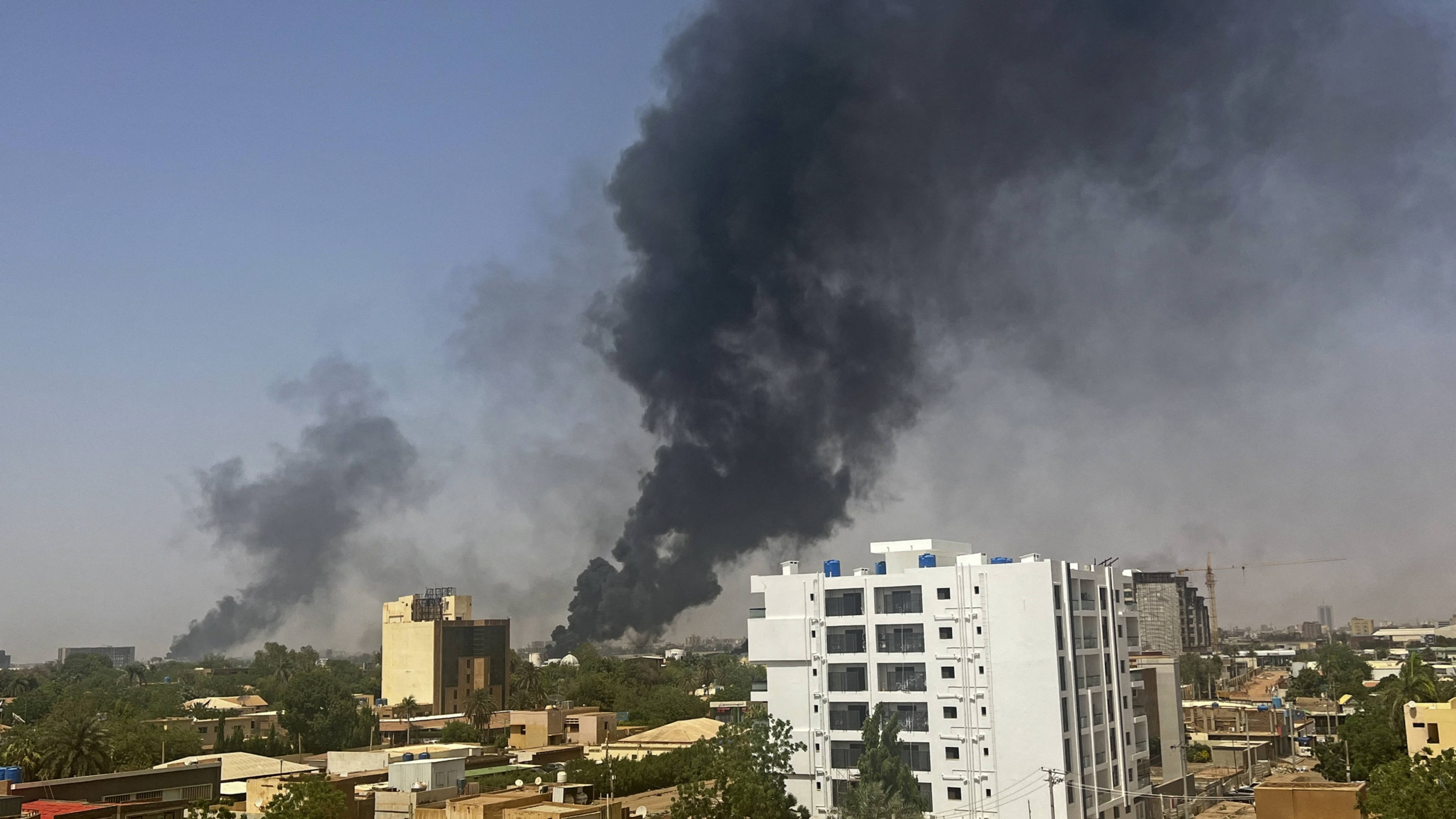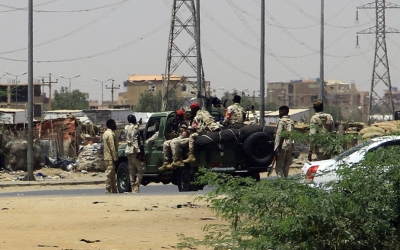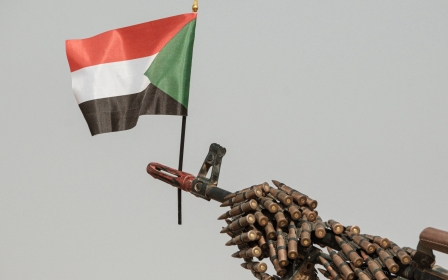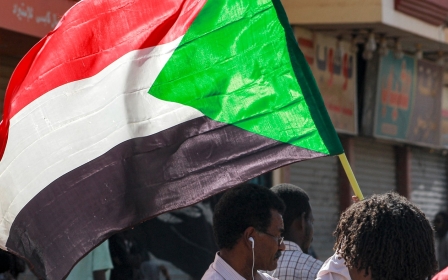Sudan: Schoolchildren among hundreds trapped by fighting in Khartoum

Efforts were underway on Sunday to evacuate hundreds of civilians, including schoolchildren, caught in the middle of the clashes that broke out between the Sudanese army and the powerful Rapid Support Forces (RSF) near the army headquarters in the capital Khartoum.
Aid workers told Middle East Eye that negotiations were ongoing to convince the warring parties to open safe corridors for evacuation operations, adding that "the operation may begin in the coming hours immediately when we get the approval from the armies".
By the late afternoon, the army and the RSF said they had agreed to a United Nations proposal to open safe passage for humanitarian cases, including the evacuation of wounded, for three hours from 14:00 GMT.
Both sides maintained their right to "respond in the event of transgressions" from the other side.
The hundreds of civilians that have been trapped in downtown Khartoum include schoolchildren, journalists, patients in medical centres and others who have been staying indoors for two days under the intense fire of the warring parties.
Aid workers have called for the opening of humanitarian corridors in order to evacuate wounded civilians, as well as other people who are unable to escape the violence due to the intensity of the fighting.
'Terrifying time'
As the students at the Comboni Primary School lined up on Saturday morning, the distant sound of gunfire rang out across the yard. Speaking to MEE, a teacher, who asked not to be named for security reasons, said they were initially unsure about what was happening outside the school, so the students proceeded to their classes.
A few minutes later, however, the sounds only got louder and closer, and smoke from gunfire, soldiers and military vehicles could be seen outside the school's gates.
Since then, the children and their teachers have been stranded in their school without sufficient food and water.
The teacher said they were trapped with around 300 schoolboys in the international school on al-Qasr Street, which is located less than 500 metres from the presidential palace.
"We are cut off in the school without food and water, but more importantly we have to protect the children, contact their families and reassure them that their kids are fine," the teacher said.
"It has been a very difficult and terrifying time."
Journalists held
Elsewhere, reporters working for a number of Arabic TV channels have also been holed up inside their offices, after several failed attempts to leave due to the intensity of the clashes.
The Sudanese Journalists Syndicate said that one of the media offices came under fire on Saturday but no one was wounded.
"It was a very difficult moment when the office was hit," journalist Mahy Aldin Gibril told MEE.
"Around 10 journalists and 20 people from other professions are held in the Kuwaiti building near Nile Street since yesterday in very bad circumstances due to our proximity to intense fire in and around the army headquarters."
The Sudanese Journalist Network (SJN), a watchdog that defends press freedom, warned against harming the journalists inside the building.
"The protection of the journalists is the responsibility of the two warring parties and we will hold authorities responsible for any harm that befalls them," the SJN said in a statement.
It also said that one journalist was wounded on Saturday during the clashes around the State Radio and TV building in Omdurman, the twin city of Khartoum.
Dialysis patients
Dozens of kidney patients who were receiving dialysis at a centre in downtown Khartoum were in a state of shock when fighting erupted around the facility and they couldn't leave, nor have their relatives been able to pick them up, Sarah Mohammed, a member in the Central Committee of Sudan Doctors (CCSD) told MEE.
"We call on all forces to open safe exit passages for patients held in the dialysis centre near the army command in Khartoum," Mohammed urged.
"We call on the forces to evacuate the children detained at the Comboni School on al-Qasr Street in Khartoum."
The CCSD said that 56 civilians had been killed in the fighting and nearly 600 wounded.
Meanwhile, Sudan's MTN telecommunications company blocked internet services on the orders of the government telecommunications regulator, two company officials told Reuters on Sunday.
'We are cut off in the school without food and water, but more importantly we have to protect the children'
- Teacher, Comboni school
The fighting escalated on Sunday, spreading to different areas and states across the country, with the two sides claiming the upper hand on the ground.
The military said in a statement that it wrested back full control of the army headquarters and presidential palace and other key installations in the capital, adding that it was a matter of time before it secured the situation in general.
Witnesses said RSF members remained inside Khartoum international airport besieged by the army but it was holding back from striking them to avoid wreaking major damage.
Thousands of heavily armed RSF members are meanwhile deployed inside neighbourhoods of Khartoum and other cities, with no authority able to control them, residents told Reuters
The military also shared a video purportedly showing RSF troops fleeing "after leaked information about the escape of their rebel commander Hemeti [Mohamed Hamdan Dagalo]".
The army's social pages have circulated photos and videos showing its soldiers controlling the RSF bases in Omdurman, Merowe and other locations.
The RSF has denied the army's claims, saying that they are still fighting on different fronts.
It said on its official Facebook page that its forces have captured the presidential palace once again.
It also alleged that they have downed a Russian-made Sukhoi plane that was used by the army to bomb the RSF bases.
Middle East Eye propose une couverture et une analyse indépendantes et incomparables du Moyen-Orient, de l’Afrique du Nord et d’autres régions du monde. Pour en savoir plus sur la reprise de ce contenu et les frais qui s’appliquent, veuillez remplir ce formulaire [en anglais]. Pour en savoir plus sur MEE, cliquez ici [en anglais].





